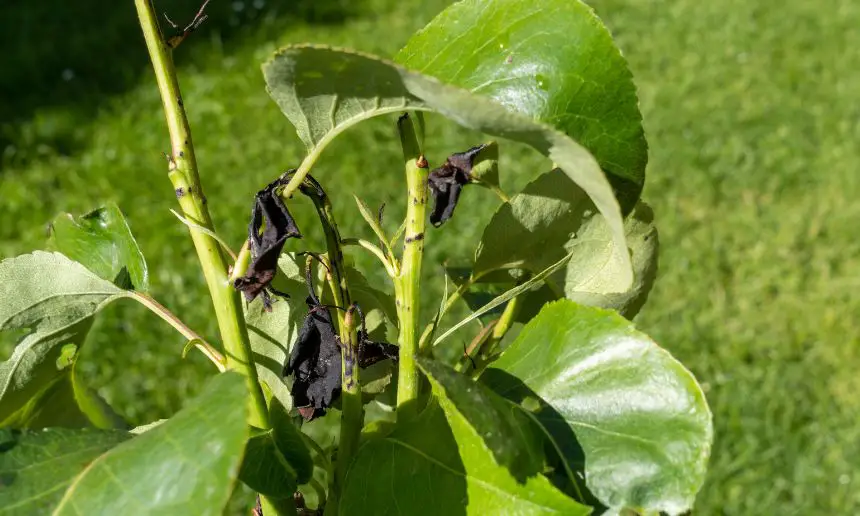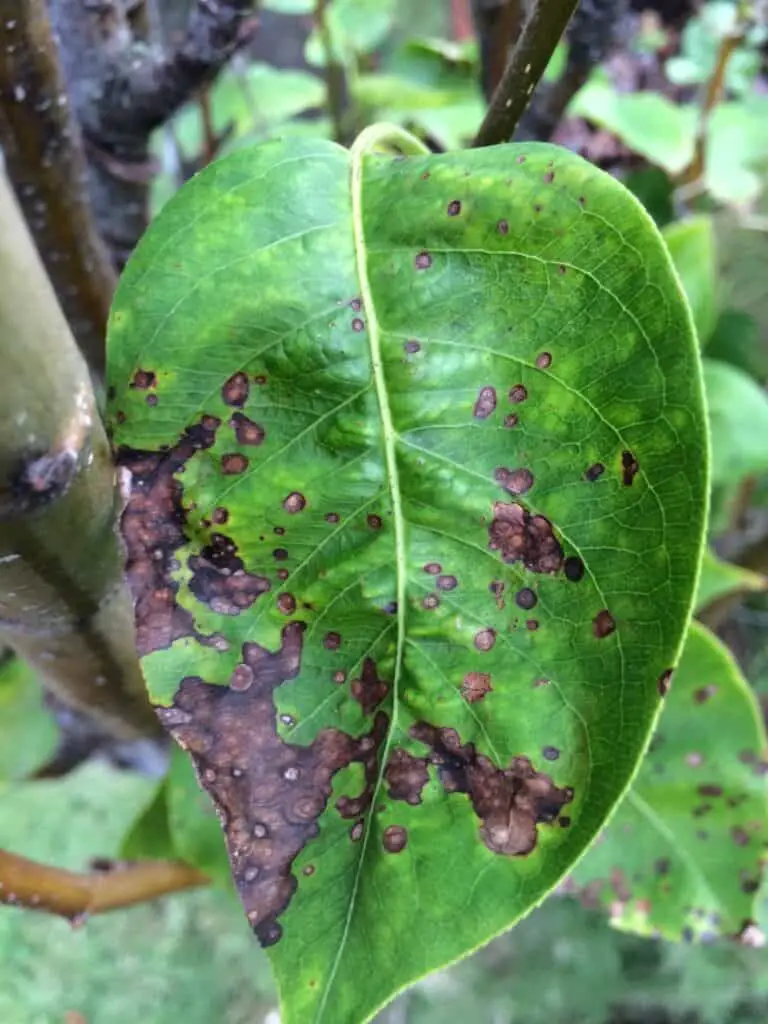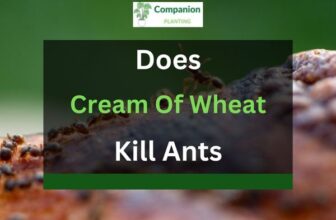Pear Tree Leaves Turning Black? (3 Reasons+Solutions)
One of the most popular fruits in the world, pears are grown both for their deliciousness and nutrient value, and ornamental qualities.
Pear trees, especially in full bloom, are wonderful plants.
Deep green leaves and branches covered in white blossoms are extremely pleasing to the eye and make a whole garden or orchard a sight to behold.
However, sometimes, you may notice that the leaves on your pear are turning black.
This not only ruins the tree’s wonderful presence but, more importantly, points to serious underlying issues and likely indicates that the tree is suffering from a disease.
While the pear tree is rather hardy and resistant to various diseases, it can still get infected no matter how much you care for and pamper it.
Below, I’ll explain the possible reasons for why pear tree leaves turning black and what actions you should take to prevent and stop it.
So, let’s dive in!
Table of Contents
3 Reasons Why Pear Tree Leaves Turning Black
Understanding the issues that cause pear tree leaves turning black and how to control them is essential not only for the health of the infected tree but for the entire garden or orchard.
The diseases that cause this are usually very contagious and can spread rapidly.
Therefore, quick reaction is of the essence, as well as work on preventing these issues from happening in the first place.
As these diseases are fairly difficult to get rid of, proper prevention will save you a lot of trouble later on.
The black leaves on a pear tree can be an indicator of a couple of different diseases. Some of those are bacterial, while others are fungal.
The most common bacterial disease is fire blight, while the most likely fungal issues are leaf spot and scab.
You can find more information on each of these diseases and how to treat them below.
Fire Blight

If the pear leaves are blackening, wilting, and curling at the time humid weather begins at the start of spring, the most likely reason is the fire blight infection.
Disfigured fruits are another sign of fire blight.
This dangerous bacterial disease is highly infectious and attacks all members of the rose family.
Besides pear, this also includes apple, cotoneaster, rose, quince, crabapple, mountain ash, and hawthorn among others.
Fire blight spreads very fast and easily, especially in moist conditions.
The speed of spreading can be even further increased by air movement, rain splashing, or if you’re using contaminated pruning tools.
During the winter, fire blight is dormant, so that’s the best time to undertake all the preventive actions.
While there’s no cure for the tree infected by fire blight, you can manage the disease, keep it under control, and slow down its spread, saving the nearby trees.
Fabraea Leaf Spot

Another potential issue that can cause blackening of the pear leaves is the fabraea leaf spot, also known as black spot or leaf blight.
The tree infected with this fungal disease will have its leaves covered in black and brownish spots and feature shrinking and cracking fruit.
Initially, you’ll notice black blisters on the leaves, with spores growing inside. Eventually, as the disease develops, the whole leaf may turn black.
Fabraea Leaf Spot is particularly dangerous because if the infection develops and becomes severe enough, it can negatively affect the immune system of the entire tree, making it more susceptible to a number of other diseases.
Ultimately, the trees can become defoliated and their fruits inedible.
Plus, the fungal spores can easily spread to other leaves and trees in the garden, especially in windy, warm, or wet conditions.
Fabraea Leaf Spot is the most active at the beginning of the summer.
Pear Scab

Similar to fabraea leaf spot, pear scab is also a fungal disease and is another potential culprit if you notice the leaves on your pear turning black.
It’s fairly similar to the better-known apple scab.
The main signs that the pear is infected by the pear scab are circular black spots that appear mostly on leaves, but can also be seen on fruits and tree trunk.
The difference from black spots caused by the fabraea leaf spot is that these spots are not uniform neither in shape nor size.
Just like the previous diseases I described, pear scab thrives in humid conditions and will most likely appear between March and late June.
It will usually first attack the young and most tender leaves on the tree.
However, once it gains a firm foothold, the pear scab will spread and infect all parts of the tree, including blossoms, shoots, and fruits.
Treating Black Pear Tree Leaves
The best way to deal with pear tree leaves turning black is to stop it from even happening and diligently work on prevention.
If you still notice black spots starting to form on the leaves of your pear tree, it’s important to react as quickly as possible.
The treatment methods you can use to deal with pear tree diseases are mostly the same for both bacterial and fungal infections.
Depending on the current condition of the tree, you may undertake prevention actions, prune the tree or use fungicides to spray it.
Each of these methods, when done properly, will contribute to the overall health strength of the tree, helping it fend off various infections and reducing the risk of black leaves.
So, always keep an eye out for black spots on leaves, as they can help you identify the problem early and control it before it spreads and becomes unmanageable.
Prevention
In the long run, prevention is the best way to keep your pear trees healthy and thriving. Proper prevention will make trees more hardy and resistant to various diseases.
As the wet and humid conditions provide the most favorable environment for the development of the most common fungal and bacterial infections, most of the prevention actions should be directed at keeping leaves as dry as possible.
Among other things, this involves trying to avoid springing the leaves when watering the plant.
Always water the tree at its base, and not from above. If possible, use a drip irrigation system. Pear trees don’t need much watering anyway, an inch of water per week at most.
Also, it’s a good idea to selectively bred pear trees to be hardier or plant pear varieties that have a higher natural resistance to diseases, such as Harrow Gold, Magness, Kieffer, Seckel, or Old Home.
Pruning
One of the best methods of preventing tree disease from spreading is pruning.
If you notice that the leaves are turning black early on and identify the disease, cutting off the infected brunches will stop the disease in its tracks and prevent further spreading to other branches.
An additional benefit of pruning is that it will promote more growth and help the tree produce more fruit.
Pruning should be done both in summer and winter, although for different reasons. Summer weather provides the best conditions for the development and spreading of the infection.
So, as soon as you notice the first signs of infection during the summer, you should aggressively prune the pear tree, cutting branches 18-20 inches below the infected area.
In winter, most diseases are dormant, so there’s no need to be very aggressive with pruning and cutting the branches right below the infected spot should be enough.
Sprays
[amazon box=”B000UJVDXY”]
Spraying the leaves with chemical or organic fungicides is a very efficient way to deal with certain pear tree diseases causing the leaves to turn black.
The spray should eliminate any spores or pathogens infecting the tree and prevent any further spread of the infection.
One of the most commonly used sprays for these purposes is a copper-based fungicide. It works great not only to stop fungal infections but also to prevent them from reemerging.
However, when using this type of fungicide, it’s important to be careful and use the doses recommended by the manufacturer as otherwise, you may be doing more damage than good.
A lot of homeowners and gardeners are reluctant to use chemical sprays, but there are more natural and organic options available, although they may not be as efficient as chemical solutions.
For example, you can use citric acidic sprays, neem oil, or vinegar spray.
Conclusion
The appearance of black leaves on pear trees should be taken seriously, as they commonly point to serious tree health issues.
In most cases, the black spots on the leaves, or the discoloration of the entire leave indicate a bacterial or fungal infection, with fire blight, fabraea leaf spot, and pear scab as the most common.
Each of these diseases is very difficult and sometimes impossible to cure, so you should put a lot of effort into preventing the infection from occurring.
If you still notice that the leaves are turning black and the tree is infected, you should focus on stopping the spread.
The best methods at your disposal for doing this are pruning and different chemical and natural sprays.
In any case, always make sure to do your research and choose the method best suited to your needs and that will do the most for the health of your pear trees.




